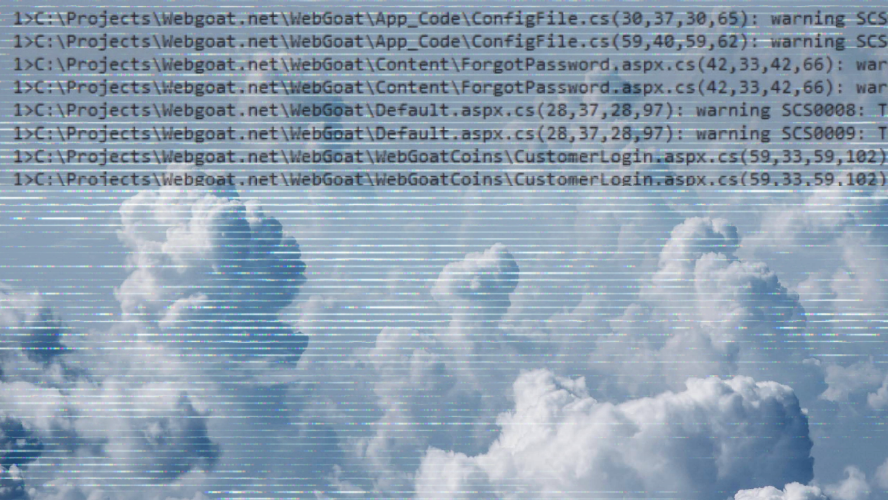Crucial Steps to Achieving Ransomware Resilience
Organizations must adopt comprehensive defense frameworks that combine prevention, detection, and recovery capabilities to be able to maintain business continuity when attacks occur.
Achieving Ransomware Resilience
Ransomware attacks have become the primary threat facing modern enterprises. According to Cybersecurity Ventures, costs of global ransomware damage are predicted to reach $57 billion in 2025. The financial toll extends far beyond ransom payments: organizations now face average recovery costs of $2.73 million, while experiencing an average of 24 days of downtime that disrupts operations and damages customer trust.
Building ransomware resilience requires more than traditional backup strategies or security tools. Organizations must adopt comprehensive defense frameworks that combine prevention, detection, and recovery capabilities to be able to maintain business continuity when attacks occur.
The stakes continue to rise as threat actors evolve their tactics. With ransomware a factor in a staggering 44% of all data breaches, and attackers now deliberately sabotaging operations in 86% of incidents, enterprises need proven strategies to protect critical data and maintain operations through any attack scenario.
Ransomware Resilience Explained
Ransomware resilience represents an organization’s ability to maintain critical operations and protect essential data before, during, and after a ransomware attack. It is the ability to withstand, respond to, and recover from ransomware attacks with minimal disruption.
This capability extends beyond simple data backup; it encompasses comprehensive strategies that allow businesses to detect threats early, contain damage quickly, and recover operations with minimal disruption.
Attacks have evolved beyond simple encryption schemes: Modern ransomware groups employ sophisticated extortion tactics, including data theft, public harassment of customers, and intentional infrastructure sabotage designed to maximize pressure on victims.
Understanding ransomware resilience means recognizing that prevention alone cannot eliminate risk. Organizations must prepare for the reality that sophisticated attackers may breach defenses, making rapid detection and recovery capabilities essential for business survival.
Key Components of Ransomware Resilience
A comprehensive ransomware resilience strategy requires five interconnected components working together in order for your organization to be able to protect data and operations:
- Prevention: Prevention starts with implementing robust access controls and authentication mechanisms like multi-factor authentication and zero-trust architectures. Regular patching remains critical since exploiting unpatched software serves as a primary entry point for attackers.
User training addresses the human element, particularly important given that SentinelOne reports 90% of all cyber incidents result from human error such as falling for phishing attacks. - Detection & containment: Real-time monitoring and anomaly detection systems provide early warning of potential ransomware activity. Automated response mechanisms can isolate infected systems before encryption spreads across networks.
These systems must operate regularly, analyzing behavior patterns and file system changes that indicate ransomware deployment. Early warning systems have become sophisticated enough to detect pre-encryption behaviors, including reconnaissance activities and lateral movement attempts. - Response & recovery: Incident response plans define clear roles and communication protocols for ransomware events. These plans must include technical recovery procedures alongside business continuity measures.
- Immutable & air-gapped backups: Immutable backups create copies of data that ransomware cannot encrypt or delete. These backups use write-once, read-many (WORM) technology or similar protections to preserve data integrity even if attackers gain administrative access.
Air-gapped storage adds physical or logical separation between production systems and backup repositories. This isolation prevents ransomware from spreading to backup data through network connections, preserving clean recovery copies even during widespread infections. - Regular testing: Frequent restoration drills verify that backup systems function correctly and teams understand recovery procedures. Testing reveals gaps in documentation, identifies process improvements, and builds muscle memory for actual incidents. Organizations should conduct full-scale cyber recovery exercises quarterly, simulating various attack scenarios to validate response plans.
Ransomware Threat Vectors and Mitigation Strategies
Understanding how ransomware infiltrates organizations enables targeted defense strategies. The most common attack vectors require specific mitigation approaches:
Primary Infiltration Methods
- Phishing remains one of the most common credential-related attack. Attackers craft sophisticated emails that bypass traditional filters, often impersonating trusted contacts or services.
- Poor patch management creates additional vulnerabilities as threat actors actively scan for unpatched systems on network perimeters.
- Supply chain compromises have emerged as another significant vector, where attackers infiltrate software vendors or service providers to reach multiple organizations simultaneously.
- Remote desktop protocol exploitation continues despite widespread awareness, particularly targeting organizations with weak authentication controls.
Systematic Exposure Reduction
Organizations can implement several structured approaches to reduce their attack surface. These methods focus on limiting potential entry points and minimizing damage potential:
- Implement zero-trust policies: Verify every connection attempt regardless of source, eliminating implicit trust assumptions.
- Enhance user awareness: Conduct monthly phishing simulations and security training tailored to current threat tactics.
- Minimize external exposure: Audit all internet-facing services and remove unnecessary access points.
- Segment networks: Isolate critical systems to prevent lateral movement during breaches.
- Monitor third-party access: Regularly review vendor permissions and implement time-limited access controls.
Regular security audits identify vulnerabilities before attackers exploit them. These assessments should examine technical controls, process adherence, and human factors. Penetration testing simulates real attacks to validate defensive measures.
Ransomware Resilience Assessments
Organizations should conduct formal resilience assessments following a three-phase approach:
- Assessment phase: Evaluate current security controls, backup systems, and recovery procedures against industry frameworks. Document gaps between current state and desired resilience levels.
- Identification phase: Prioritize vulnerabilities based on likelihood and potential impact. Map critical data flows and dependencies to understand recovery requirements.
- Prioritization phase: Develop remediation roadmaps addressing high-risk areas first. Allocate resources based on business impact analysis and regulatory requirements.
Continuous improvement requires quarterly reassessments as threat landscapes evolve and organizational infrastructure changes.
Proactive Ransomware Defense Measures for Enterprises
Enterprise ransomware protection requires layered defenses that address multiple attack stages. The following practices form the foundation of effective ransomware resilience:
- Endpoint detection and response (EDR): Deploy advanced endpoint protection that monitors behavior patterns rather than relying solely on signature-based detection. Modern EDR platforms identify ransomware-specific activities like mass file encryption attempts or shadow copy deletion.
- Network segmentation: Isolate critical systems and data repositories using VLANs, firewalls, and access control lists. Proper segmentation limits ransomware spread even if initial defenses fail.
- Privileged access management: Implement just-in-time access controls and monitor administrative account usage. Since ransomware often exploits elevated privileges, limiting and auditing these accounts reduces attack effectiveness.
- Automated backup verification: Schedule regular backup integrity checks and test restorations. Automation helps identify corruption or incomplete backups before they’re needed for recovery.
- Threat intelligence integration: Subscribe to industry-specific threat feeds and integrate intelligence into security tools. Early warnings about emerging ransomware variants enable proactive defense updates.
Managed Resilience Services
Organizations lacking specialized security expertise can leverage managed ransomware resilience services. These offerings provide ongoing monitoring, threat hunting, and incident response capabilities through experienced security operations centers. Resilience-as-a-service models offer comprehensive protection without requiring extensive in-house resources.
Real-World Ransomware Recovery: Bilthoven Biologicals Case Study
The experience of Bilthoven Biologicals (BBio), a leading Dutch vaccine manufacturer, demonstrates how proper backup and recovery solutions can mitigate the impact of ransomware attacks on critical healthcare operations. As a producer of high-quality polio vaccines for organizations like the World Health Organization and UNICEF, BBio’s manufacturing operations must remain operational despite cyber threats.
On September 21, 2022, BBio experienced a major ransomware attack that began with users unable to access their files. The IT team discovered a ransom note indicating its files had been encrypted, with the attackers demanding payment for decryption. The attack spread rapidly through the domain field and factory, compromising everything connected to the Active Directory.
“The ransomware spread through the domain field and the factory. Basically, everything connected to the Active Directory was compromised,” said Paul Vries, IT Consultant at BBio. “We had to move quickly to stop the spread as we weren’t sure of the exact scope of the impact.”
Rapid Response and Recovery
BBio’s response team immediately disconnected the network and shut down infected servers while preserving unaffected machines to minimize disruption to vaccine production. By the second day, it restored the AD and backup environment, allowing it to begin systematic recovery of critical services.
Using Commvault Cloud Backup & Recovery, the team was able to restore virtual machines and backup data with minimal complexity. “We love the simplicity of the Commvault dashboard. With just a few clicks, we can restore a virtual machine or backups after an attack which is vital in our line of work as a pharmaceutical company with very sensitive data,” explained Vries.
Working in shifts throughout the night, the IT team successfully restored services across multiple offices and the factory in just nine days. This rapid recovery protected BBio’s ability to continue its mission-critical vaccine production, demonstrating the value of comprehensive backup solutions in maintaining continuous business during ransomware incidents.
Lessons Learned and Enhanced Protection
The ransomware incident highlighted the importance of disaster recovery planning for BBio. “We didn’t have a recovery plan in place before the attack,” said Vries. “We are now working with Commvault to build a disaster recovery plan so we know better what is important to get up and running first, and in what order.”
BBio discovered that some files escaped encryption because it had moved media agents outside the domain, providing valuable insights for its future protection strategy. Following the attack, the organization implemented additional security measures, including Commvault Cloud Air Gap Protect to strengthen its ransomware resilience for its hybrid environment.
This case demonstrates several critical lessons for organizations:
- The value of rapid response protocols to contain ransomware spread.
- The importance of intuitive, reliable backup and recovery solutions.
- The need for comprehensive disaster recovery planning before attacks occur.
- The effectiveness of air-gapped backup solutions in protecting critical data.
BBio’s experience shows that while ransomware attacks represent a significant threat, organizations with proper backup and recovery systems can minimize downtime and maintain critical operations even after a successful attack.
How Commvault Enhances Ransomware Resilience
Commvault’s comprehensive data protection platform addresses ransomware resilience through integrated capabilities designed for modern hybrid environments. The platform combines multiple layers of defense with automated recovery features that help companies minimize downtime and data loss.
- Immutable backup: Commvault implements immutability through a hardware-agnostic approach, enabling organizations to lock backup data without requiring specialized storage systems. This flexibility allows layering of security controls across different infrastructure types, whether using WORM storage, object lock capabilities, or Commvault’s built-in locking mechanisms.
- Air-gapped protection: Air Gap Protect creates isolated recovery environments designed to remain inaccessible to ransomware. These air-gapped copies provide clean restoration points even when primary and secondary systems become compromised. The solution automates the creation and management of air-gapped copies while maintaining strict access controls.
- Automated threat detection: The platform’s automated threat detection capabilities continuously monitor for ransomware indicators across protected environments. Machine learning algorithms analyze backup patterns, file changes, and system behaviors to identify potential attacks early. When threats are detected, automated workflows can isolate affected systems and initiate recovery procedures.
- Cleanroom Recovery: Cleanroom Recovery environments provides reliable spaces for data validation and system restoration. These isolated environments allow organizations to scan recovered data for malware before returning systems to production, helping prevent reinfection cycles that plague many ransomware victims.
- Multi-cloud environment support: Organizations operating across multiple cloud platforms benefit from Commvault’s unified approach to data protection. The platform provides consistent ransomware defenses whether data resides in AWS, Azure, Google Cloud, or on-premises infrastructure.
This eliminates protection gaps that often emerge at cloud boundaries. Cross-cloud recovery capabilities enable organizations to restore workloads to alternate locations if primary sites become compromised. This flexibility supports business continuity strategies that leverage cloud infrastructure for resilience.
By combining these capabilities, Commvault enables organizations to build comprehensive ransomware resilience that helps protect critical data, maintain business operations, and accelerate recovery when attacks occur. The platform’s integrated approach addresses a variety of ransomware threats while adapting to evolving attack techniques and business requirements.
Ransomware resilience requires a multi-layered approach combining prevention, detection, and rapid recovery capabilities. Organizations must protect their data through immutable backups, air-gapped storage, and comprehensive monitoring systems. The stakes are too high to delay: With ransomware attacks increasing in frequency and sophistication, businesses need proven solutions to maintain operations and protect critical data.
Request a demo to see how we can help you strengthen your ransomware resilience strategy.
Related Terms
Air gap backup
A backup system that is physically isolated from the main network, creating a security gap that prevents ransomware from accessing backup data.
Air gap backup
A backup system that is physically isolated from the main network, creating a security gap that prevents ransomware from accessing backup data.
Cleanroom Recovery
A specialized recovery process that enables retrieval of critical data in an isolated environment, helping prevent reinfection during ransomware recovery.
Cleanroom Recovery
A specialized recovery process that enables retrieval of critical data in an isolated environment, helping prevent reinfection during ransomware recovery.
Ransomware protection
The process of preventing the occurrence of a ransomware event, and/or mitigating the risk of a successful attack.
Ransomware protection
The process of preventing the occurrence of a ransomware event, and/or mitigating the risk of a successful attack.

Bilthoven Biologicals strengthens ransomware protection with Commvault

Cyber Attack Recovery in Minutes, Not Days
